Darlings of the American Deserts: Photos of the Greater Roadrunner
Cool critter
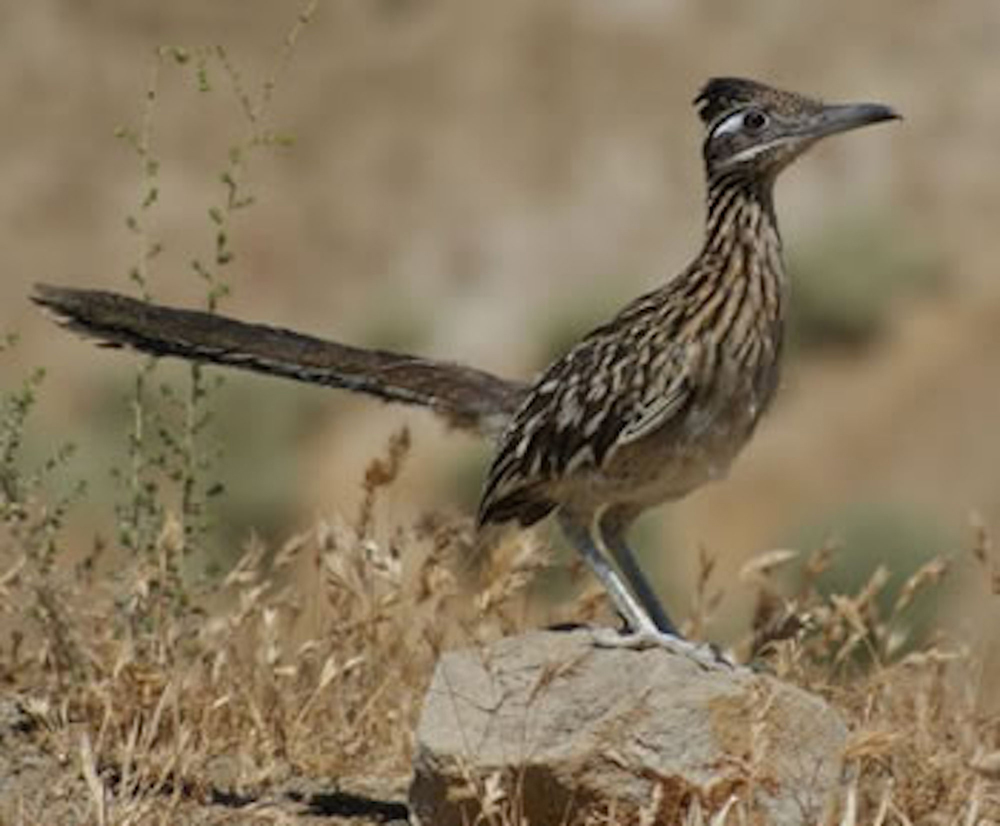
The great American deserts have an assortment of unique critters, and chief among them is the greater roadrunner, Geococcyx californianus. This often comical acting bird, as a member of the cuckoo family, would always rather run than fly.
Quick feet
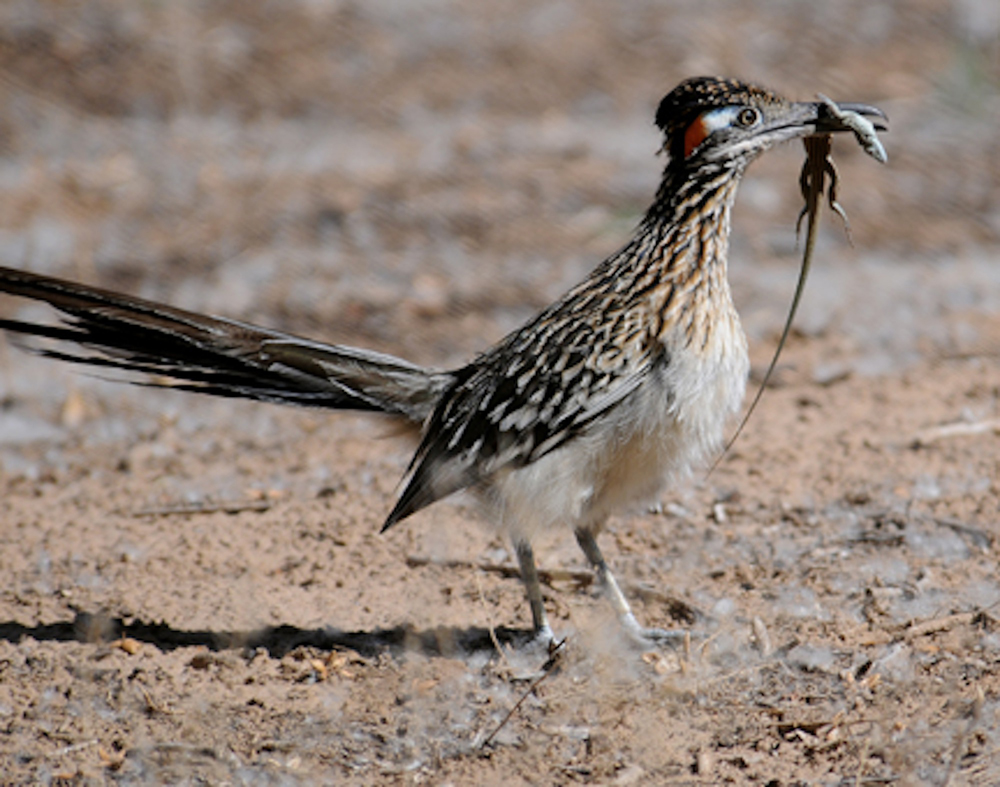
The greater roadrunner is a year-round resident inthe arid and grassland regions of 11 western states (California, New Mexico, Nevada, Utah, Arizona, Colorado, Kansas, Oklahoma, Arkansas, Louisiana and Missouri) and southward into the central regions of Mexico and all of the Baja Peninsula. The birds will inhabit regions from below sea level to nearly 10,000 feet (3,048 meters). They can run up to 15 miles per hour (24 km/h) and even faster in spurts while in pursuit of a lizard or even a rattlesnake.
Tall and strong
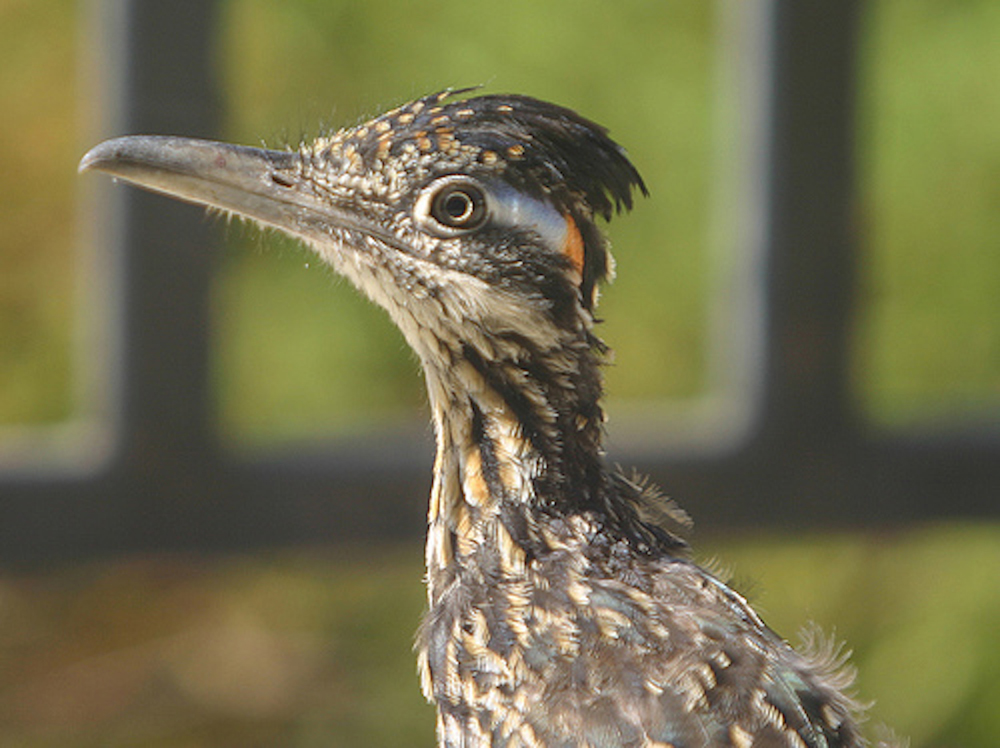
Roadrunners can grow to be more than 2 feet (0.6 meters) in length, from the tip of their lethal, sturdy bill to the tip of their fanning tail. Its bushy blue-black crest rapidly moves up and down, expressing the bird's momentary interest. Their dark, streaky brown plumage is an ideal camouflage for the sparse desert regions in which they thrive. Roadrunners have a colorful orange and blue patch of skin behind each eye.
Brave and speed
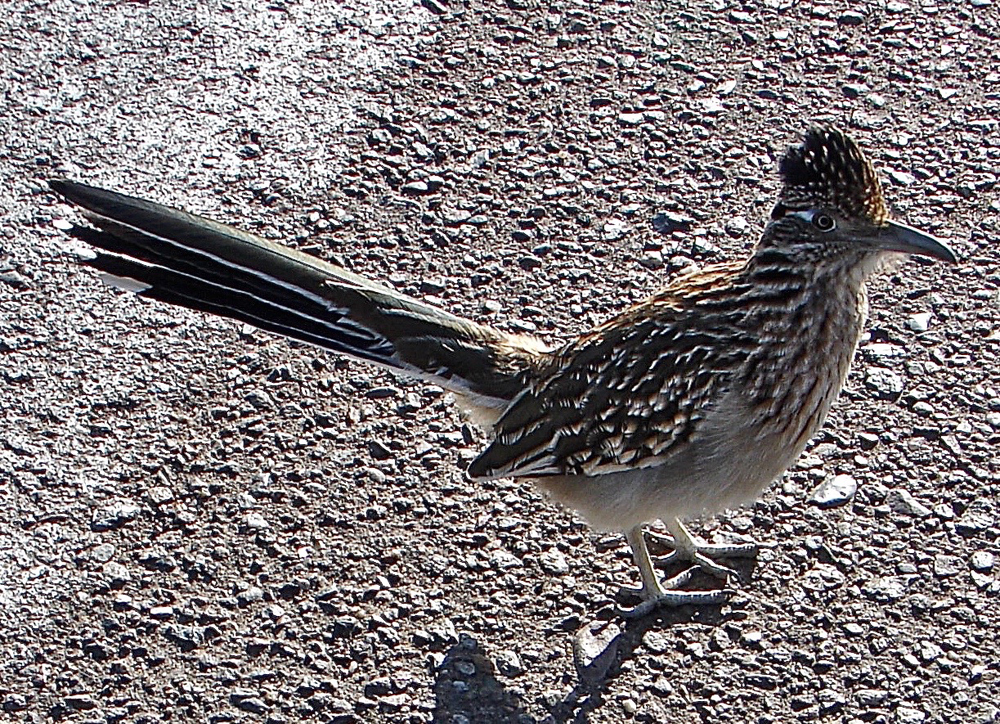
In both Mexican and Native American traditions, thegreater roadrunner holds a special place in their legends and belief systems. This powerful omnivore is honored for its speed, strength, courage and endurance. Its unique X-shaped footprint, created with two toes pointing forward and two backward, is a sacred symbol of the Pueblos tribes used to ward off evil.
Got hops
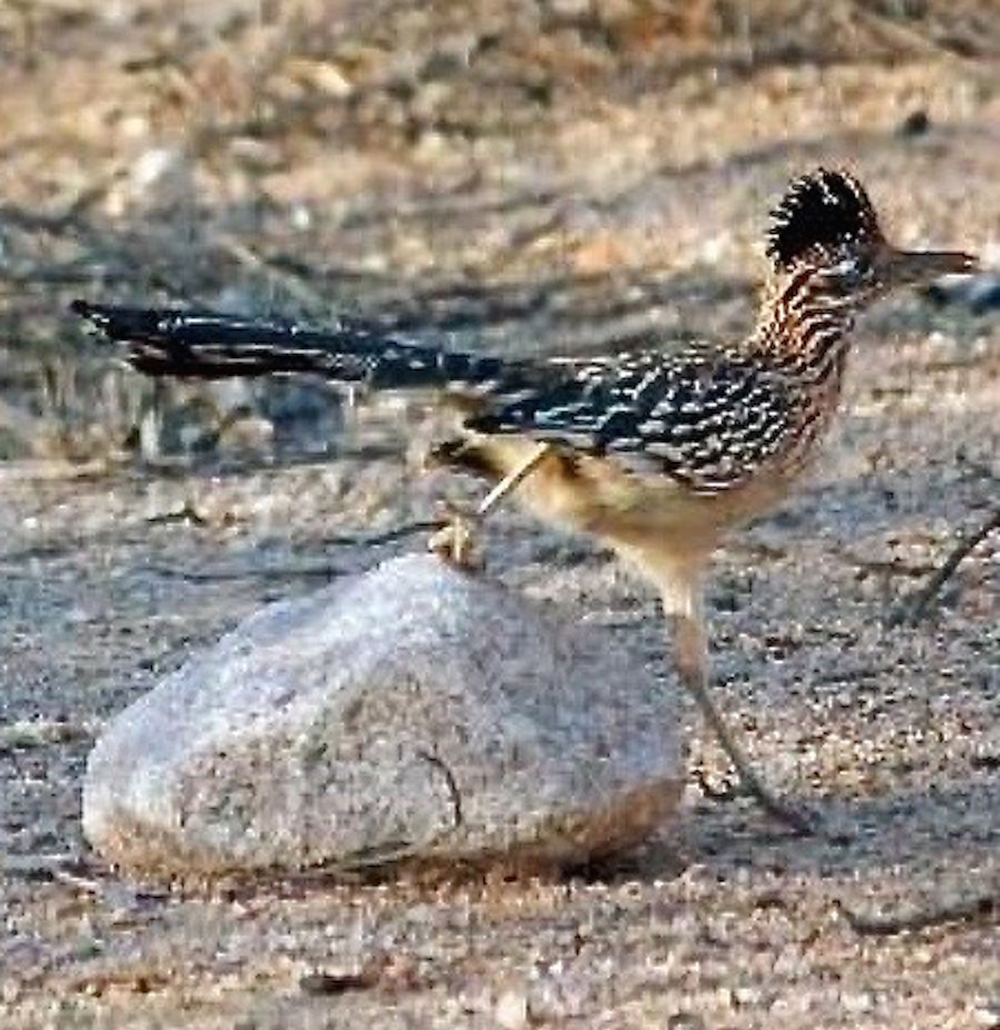
For small insects, reptiles, rodents and birds, the greater roadrunner is a ferocious predator. Hunting practices include walking with quick bursts through the landscape in search of prey and, once spotted, a rapid rush forward toward the victim, catching it with a powerful bill. The greater roadrunner has been documented leaping straight up into the air, snatching a passing dragonfly or even a darting hummingbird. These cuckoos will also eat fruits, seeds and other plant material.
Sly hunter
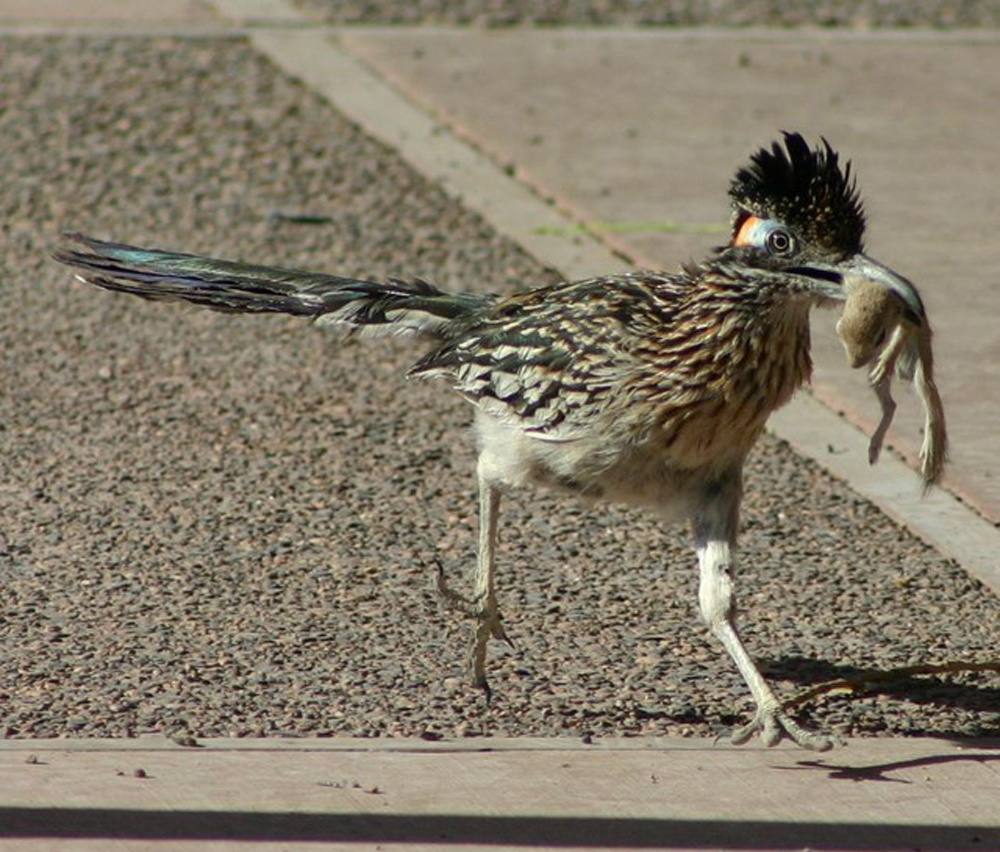
The greater roadrunner seems to love dining on poisonous animals, including scorpions, tarantulas, centipedes and rattlesnakes. They will snatch up young round-tailed ground squirrels (Xerospermophilus tereticaudus), as shown here, as well as small birds. Baby birds in their nests are at great danger from this deadly, passionate hunter. For the small animals found in their desert homeland range, the greater roadrunner is to them like a modern day Tyrannosaurus rex!
Life long mates
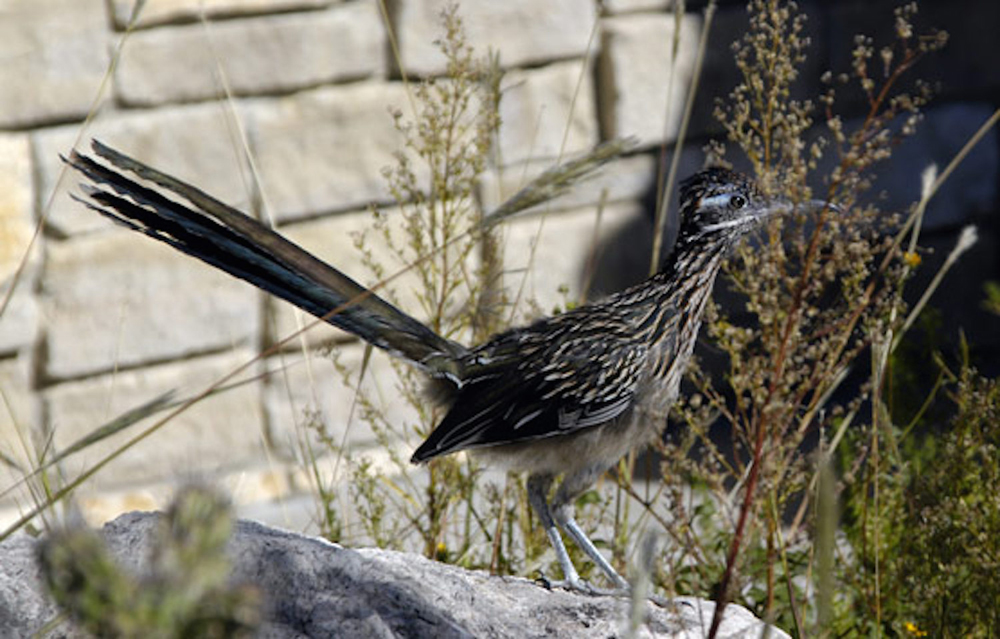
Greater roadrunners will mate for life. A mated pair is extremely territorial, defending their land year-round from intruders large and small. Courtship rituals can be initiated by either sex and involves the sharing of a stick or blades of grass being dropped upon the ground. A male will often run away from his mate before eventually wagging his tail from side to side before slowing bowing to his chosen lady.
Sign up for the Live Science daily newsletter now
Get the world’s most fascinating discoveries delivered straight to your inbox.
Family home
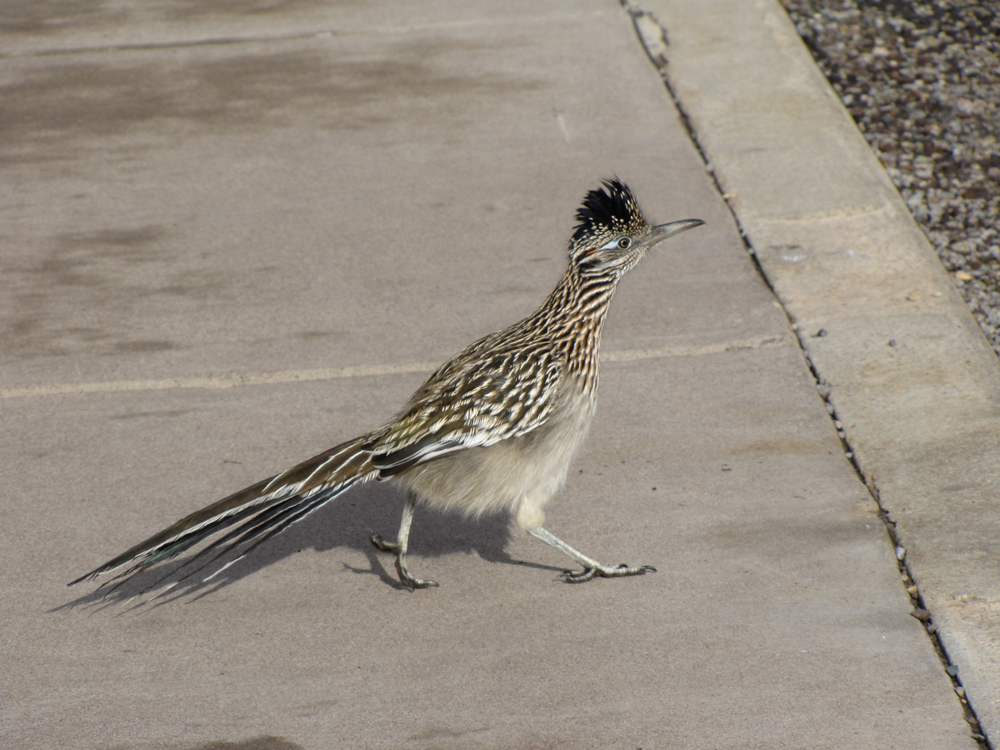
Both sexes will help build a nest, typically from 2 to 12 inches(5 to 30 centimeters) above ground level. Nest are made from a platform of loosely stacked sticks lined with grass and leaves. Nests are usually found in nearby mesquite and palo verde trees or tall cholla cacti. A completed nest can measure 17 inches (43 cm) across and have a depth of up to 8 inches (20 cm).
Growing a family
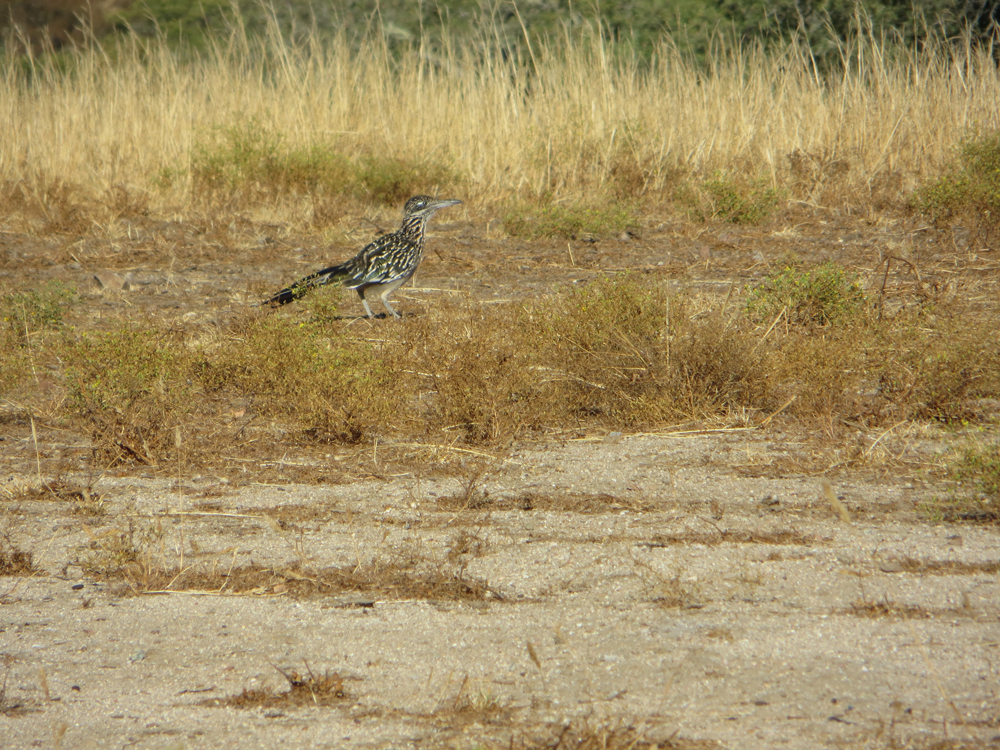
Three to six white eggs will appear in the nest at intervals hatching within 19 to 20 days. If food is scarce, the older chicks will seize all the food, resulting in the death of the younger siblings. Hatchlings escape from their egg with eyes closed but are strong and active. A covering of white down feathers cover the chicks' black skin.
Evolved for deserts
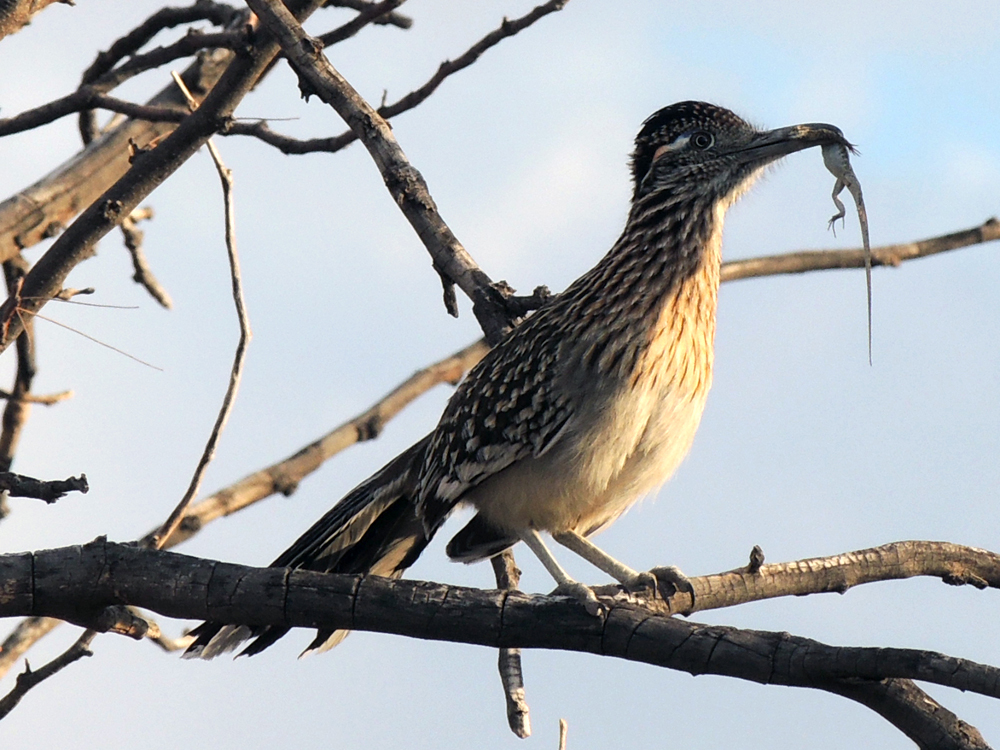
The greater roadrunner has several specialadaptions to assist in surviving in these arid lands. Just in front of each eye is a special gland that secretes an emulsion of highly concentrated salt, thus using less water than excretions from the kidney. They will also quiver the naked skin area underneath their chin to help dissipate heat. A diet of small mammals and reptiles also adds moisture to their system.
Neighbors
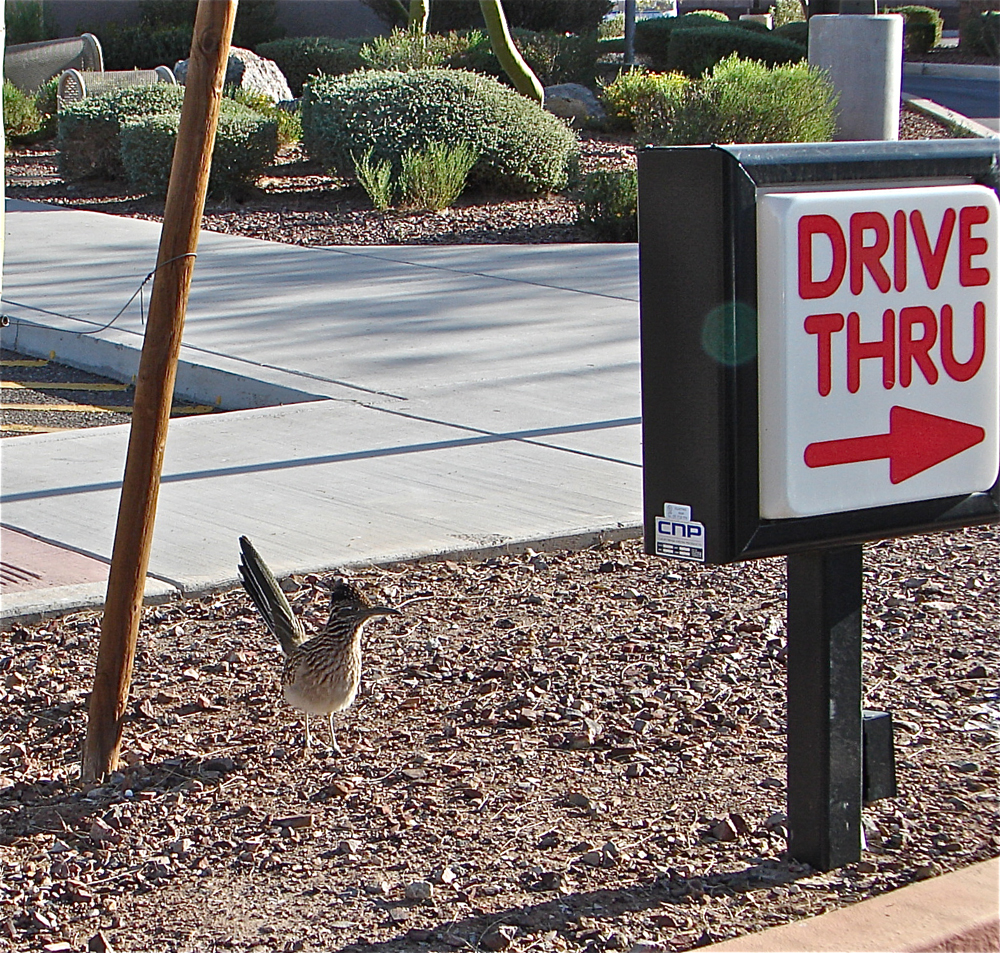
The greater roadrunner lives well in close proximity to humans. They are commonly found dashing through desert neighborhoods in search of their prey. Coyotes are a common danger, as are automobiles, because the greater roadrunner quickly tries to cross a busy road. But these cuckoos are smart enough to know that food can be found in many human-type places, even at a drive-through window of a restaurant.









